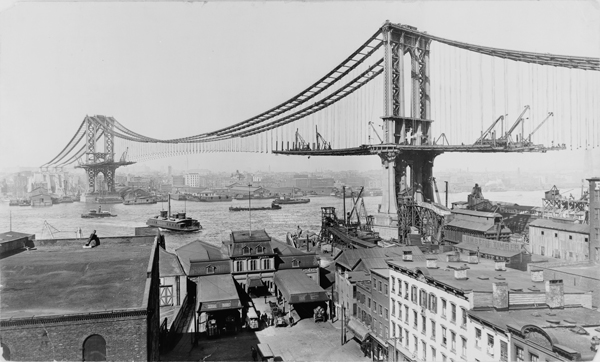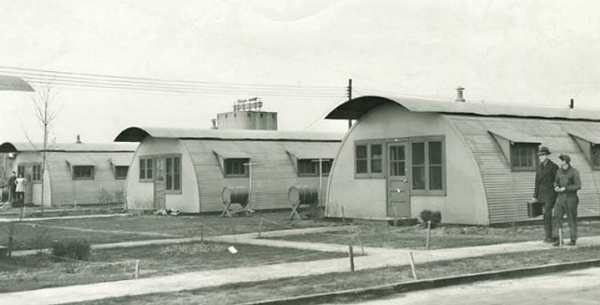Trending
This month in real estate history
This month in real estate history

1903: New plans for the Manhattan Bridge revealed
Revised plans for a third bridge connecting Manhattan and Brooklyn over the East River were shown for the first time 115 years ago this month. The Manhattan Bridge was novel in its engineering, particularly in comparison to the Williamsburg Bridge, the New York Times highlighted in a report at the time, as the bridge’s structural design limited movement caused by elements such as wind. Though the plans were still pending approval by the Municipal Art Commission, as process dictated, construction was already underway and encountering some trouble. Three workmen digging the bridge’s foundation in the Brooklyn caisson died before reaching a depth of 97 feet, the Times reported weeks later. To reach the depth that was required to anchor the bridge in solid rock — 129 feet —would have resulted in too many workers’ deaths the construction firm handling the project said, so the bridge would instead rest “upon a bottom of firm gravel and sand.”

A Quonset hut
1945: Prefab debuts to meet post-war housing shortage
The results of a design competition 73 years ago this month revealed how residential construction would transform over the next several decades. Prefabricated materials were used in 65 percent of the designs presented for the Case Study House Program, which was held to demonstrate how technology developed during World War II could be applied to housing construction once the troops returned, the New York Times reported. Houses were built for the competition, the most famous being Ray and Charles Eames’ Case Study House 8 in Los Angeles, which is now a National Historic Landmark. Less than a year later, New York City called for the delivery of 2,000 Quonset huts — prefabricated frame structures that were used in the war — to a 75-acre site in Canarsie to house veterans. Today, there are a number of notable modular buildings throughout the city, including Forest City Realty Trust’s 461 Dean Street and Monadnock Development’s Carmel Place.
1963: Industry takes stance against JFK’s tax plan
The real estate industry launched an offensive against President John F. Kennedy’s proposed changes to the tax code 55 years ago this month. Though the amended bill would cut the corporate tax rate, it also created a new capital gains tax on securities and other capital assets. Amid the resulting outcry from real estate’s leaders, President Kennedy softened the rules by lowering the tax rate on any asset held for longer than a year, but disgruntled realtors still traveled to Washington, D.C., to speak against the bill before a House committee. The New York Times quoted one of them, Maurice A. Pollak, warning that “very substantial redevelopment projects … simply cannot be financed if we must compete for risk capital under these conditions.” The following year, most of the bill was passed and President Lyndon Johnson signed it, but JFK’s long-term goal behind the capital gains revision — to eventually tax the wealthy on their profitable investments — was weakened by the allowance of inherited capital gains to escape full taxation. That rule still stands and was recently expanded under President Trump’s tax overhaul.




